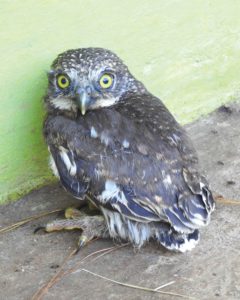By Anu P James
The lockdown due to COVID-19 has been an extraordinary time of our lives. As we are all being locked down in our own homes and have relatively calmed down, this has been a period which was extremely hectic and action packed for the Wildlife Wing of the Forest and Environment Departments of all the states across India.
We have increasingly encountered cases of wild animals appearing in human habitations with news that they are in fact reclaiming their once lost territories as humans had for a while retracted into their homes. There has also been a spike in wildlife crimes as people were seen venturing out into forests and resorting to hunting and poaching. This is true for our state in general and Khasi Hills Wildlife Division (KHWD) in particular.
During the lockdown period of 68 days so far, KHWD alone has rescued more than 60 wild animals all across its jurisdiction, which includes East Khasi Hills, West Khasi Hills, South West Khasi Hills and Ri Bhoi. The division has rescued mammals like slow lorises, barking deer, leopard cats, civet cats and flying squirrels; birds like eagles, owls and owlets; and amphibians and reptiles like turtles, tortoises and snakes. Among the rescued animals, the species of slow loris, leopard cat, civet cat and flying squirrel are accorded the highest degree of protection under Schedule I of The Wild Life (Protection) Act, 1972.
Almost one-third of the rescues were in and around Shillong within a radius of 20 km. At the same time, we have gone wide across Khasi Hills and even up to the international border areas for some rescues. Each one of these cases was unique, involving different species, localities and stages and health status of the animals involved. In some cases, the department got calls to “rescue” perfectly healthy animals from their habitat, which in fact is neither desirable nor permissible.
On the contrary it might even be considered as a wildlife crime as per the definition of ‘hunting’ given in Clause 16 in Section 2 of the Wild Life (Protection) Act, 1972.

The hunting, as per the said definition includes (a) killing or poisoning of any wild animal or captive animals and every attempt to do so; (b) capturing, coursing, snaring, trapping, driving or baiting any wild animal or captive animal and every attempt to do so; (c) injuring or destroying or taking any part of the body of any such animals, or in case of wild birds or reptiles, damaging the eggs of such birds or reptiles, or disturbing the eggs or nests of such birds or reptiles.
The rescue operations should ideally be limited to animals which have met with accidents or have suffered injuries which cannot heal on their own without special care, orphaned animals which are too young to survive on their own without maternal care and animals which have strayed into human habitations and pose danger to residents of such habitations. Wildlife rescue should not include removing animals, including young ones, from forest areas/natural habitats and removing birds from their nests.
Even in the cases where rescue of a wild animal is genuinely required, it is important to inform the Wildlife Department and avoid human contact with the animal. This is especially relevant in cases where there is a possibility to reunite young ones with their mothers.
We should also remember the fact that parental care and the upbringing of young ones by wild animals cannot be replaced by us. This is the first part of a rescue. An actual rescue does not end here. It is complete only when the wild animal is released back into the wild or in its natural habitat where it originally belongs to.
Once an injured, weak or orphaned animal after days of departmental and veterinary care, fully recovers from the injury and is fit to survive on its own in the wild, it is released back in wild in a suitable habitat after the animal’s fitness is certified by the veterinarian doctor and after getting the permission of The Chief Wildlife Warden.
Because of various natural or anthropogenic causes like forest fires, jhum fires, expansion in human habitation clubbed with fragmentation of wildlife habitats such wildlife emergencies are bound to increase in near future. There can be an element of co-existence with all these animal species we have rescued during this period be it the slow lorises, the leopard cats, owls or the tortoise especially in the Agro-Horti-Forestry landscape of our State where we cannot tell definitely where one forest ends and another forest or wildlife habitat starts.
We as human race have been sharing our planet with numerous other creatures many of which we do not even know and we are just one species in the web of life who have disproportionately harnessed every known resource to our material advantage. A microscopic virus is making us rethink and is giving us the opportunity to redefine our relationship with nature. Let’s pick up those strands of harmonious co-existence and live on responsibly in our land.
(The author is an officer of the Indian Forest Service and is presently working as Divisional Forest Officer, Khasi Hills Wildlife Division, Shillong. Views expressed in this article are her own)




